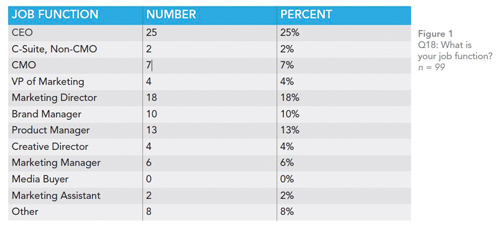 By Jeff Adee
By Jeff Adee
Canada is a strong, growing and stable market. From “old school” cataloguers to the latest tech firms, Canada represents potential in new customers and increased market share figures.
What are the steps that companies can take to maximize their potential in the Canadian market?
Valuable data types
The first step is to check what data you have available and how it may be valuable, not just to your company, but also to other firms marketing their products or services. Publishing companies have subscribers, seminar companies have show attendees and most all companies have customer files available, for example.
With the proper hygiene and data collection methodology, all of these segments will be of value to acquisition efforts.
Business data segments should include contact name, title, company name, physical address and possibly phone numbers and email addresses (more on email addresses in a bit).
Additional demographic fields like company size, business type, job function and others will greatly increase demand. The baseline for consumer data is name and address although age, income and other variables come into play as well.
Going to market
Once a data asset has been properly vetted, the next step is how to go to market. List management firms exist with the sole purpose of helping these efforts. These firms manage and monetize data segments by building relationships with data buyers directly and at agencies and other marketing related locations. They also can add value to data sets by keeping data updated, adding selectable demographic fields and filling in gaps where certain data elements may be missing.
When looking for a list management firm, managed client rosters (especially customers in your specific business segment), owned Canadian data assets, salesforce experience and company stability are all factors to be considered.
The stable of clients at a list management firm can provide a lot of insight. Strength in vertical markets — particularly markets that fit your business model — can be a good indication of what type of end-users may be available for a specific data set. Also, the length of the client relationships. If a customer has their data with a specific firm for three-plus years, it’s a safe bet they are doing a good job.
List management partners that own their own Canadian data is another item to check. Wholly owned data assets can be utilized in enhancing and confirming accuracy, which leads to better results and additional revenue. Business data, for instance, becomes undeliverable at a rate around 2%-3% per month. Along with internal hygiene efforts, a partner with up-to-date Canadian data can match or update regularly to ensure accuracy within needed data elements.
Sales and company tenure are also important criteria. Salespeople that have been in the industry longer will have more and better relationships with buyers. They often have connections across several different industries and can immediately pair data files with end users.
Companies that have been in the space for several years have procedures and systems in place for all the important facets of list management: customer service, data processing, accounting/billing and data security, among others.
So, in the end, it all comes down to one thing: generating additional revenue. But how much? This figure depends on many factors: file size, depth of data, accuracy of data, market focus and uniqueness being a few.
Companies that are focusing on the American marketing and monetizing U.S. data typically see a 5%-10% lift in overall revenue when like Canadian data is added, for instance. Lists that include specific decision-making contacts will demand a higher price than location-only information. Data sets in hot markets (emerging tech comes to mind) will also fetch a premium when used.
Regulations compliance
That brings us to the third step: the reaching for the holy grail of Canadian data i.e. email lists. With Canada’s Anti-Spam Law (CASL), the email channel becomes trickier to navigate compared with email marketing in the U.S.
CASL regulations apply to everyone: individuals, businesses and not-for-profit organizations. The regulations involve, among other items, the sending of commercial electronic messages.
Under CASL, individual consent must be gained before an email message can be sent. The safest way to accomplish this task is to have contacts opt-in to receiving third-party marketing messages. Data providers with lists that have the proper permission regarding email usage can charge a premium for this data and stand out among others in the field.
From local businesses increasing market share, to companies in other countries looking to increase global reach, accurate marketing-related Canadian data assets can be of high value and provide their owners with a strong revenue stream. Collecting the right data elements, keeping data clean and finding the right partner are key steps in this initiative.
When done successfully, organizations are able to double down on data—utilizing it for the initial reasons that data was collected—but also monetizing it within the open marketplace.
Jeff Adee is senior vice president and general manager, B2B Data Solutions, Infogroup.



